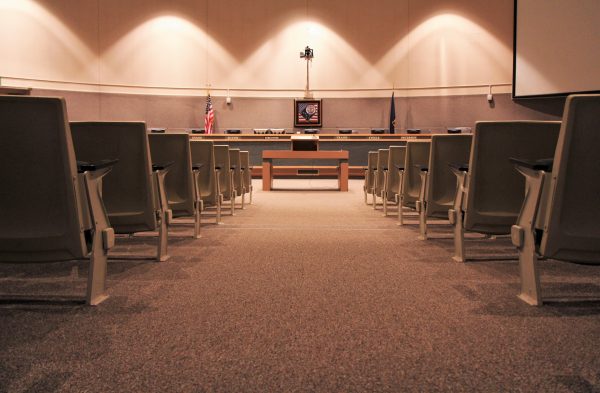
Anchorage voters will decide on a measure that could transform the city’s politics in a subtle, but far reaching way. Residents will vote yes or no on an amendment to the municipal charter that would bump up the number of members on the Anchorage Assembly from 11 to 12. That will involve redistricting some of the geographical boundaries at the heart of local politics; something that has the potential to shift the body’s balance of power.
In Anchorage, not all of the city’s six political districts are equal. The east, west, midtown, south and Eagle River districts each have two representatives on the body. But since the mid-80s, the downtown district has had just one. The logic in the status quo is that the five bigger districts have more residents living in their boundaries, about twice the number living downtown, and so should have twice the representation.
But, that argument is losing sway.
“Unequal representation is a pretty basic concept,” said Heather Arrono, one of the people who spoke in favor of a proposal to put the switch on the ballot in this spring’s municipal elections during a Tuesday night Assembly meeting.
Other members of the public testified about the problems faced uniquely by the downtown district as a result of having just one member. For example, if that person gets sick or goes on vacation, approximately 30,000 residents then have no representation on the body as far-reaching decisions are made.
“There’s an incredible on-boarding process that comes with new members, and that takes time,” said Amanda Moser, who spent eight years working in the municipal clerk’s office and now heads the Anchorage Downtown Partnership.
“When you have complete turn-over of your representation,” she added, “you kind of lose that institutional knowledge.”
The ballot measure wouldn’t simply add a new member to downtown, it also calls for the Assembly’s district lines to be redrawn. That would happen in 2021, when the state will be doing the same thing with legislative boundaries as part of its own redistricting process. The downtown district would be expanded, and everybody else’s terrain would shrink just a little, giving each of the six sectors the same number of residents.
For several years, the Assembly’s makeup has grown steadily more progressive, working closely with the current mayor’s administration. Quietly, some sitting members worry that if the lines are re-drawn, they will lose some progressive-leaning neighborhoods and be faced with running for re-election in what could become more conservative constituencies. The measure passed, however, with overwhelming support, 9-2.
With an even number of members, ordinances would require seven votes to pass.
Pushback came from Eagle River, whose members were the lone no-votes on the measure. Crystal Kennedy framed it as a fairness issue.
“The concern in Chugiak-Eagle River is that we then actually end up diluting the vote,” she said. “For us, having to get six votes now to side with something going on in Eagle River can often be a challenge. Now it would have to be seven.”
Another Eagle River member, Fred Dyson, said that because so many people in the municipality use downtown, it has long been the case that other representatives look out for its interests.
“If the downtown is sick, the rest of the city gets pneumonia,” Dyson said. “But other areas could be in a ditch and it doesn’t affect our municipality. And it seems to me the Assembly has taken really good care of its downtown heart.”
Not everyone agrees with that, though. In addition to some of the wealthiest neighborhoods in the city, the downtown district also has many of the poorest. It houses a disproportionate number of social services, low-income and supportive housing, overnight shelters, bars and clubs, all of which create a unique set of problems for residents and municipal policy-makers. Many critics have pointed to Assembly’s structure as a partial explanation for that.
“By virtue of our organization, the poorest people in our community have one voice, and one seat that they can aspire toward,” said Christopher Constant, the downtown member, who has pushed hard to get the measure on the ballot. “If you compound that year in and year out since 1985, it’s a dozen opportunities people have missed to stand.”
Now, voters will decide whether or not to expand their representative body in April’s municipal elections.
Zachariah Hughes reports on city & state politics, arts & culture, drugs, and military affairs in Anchorage and South Central Alaska.
@ZachHughesAK About Zachariah




